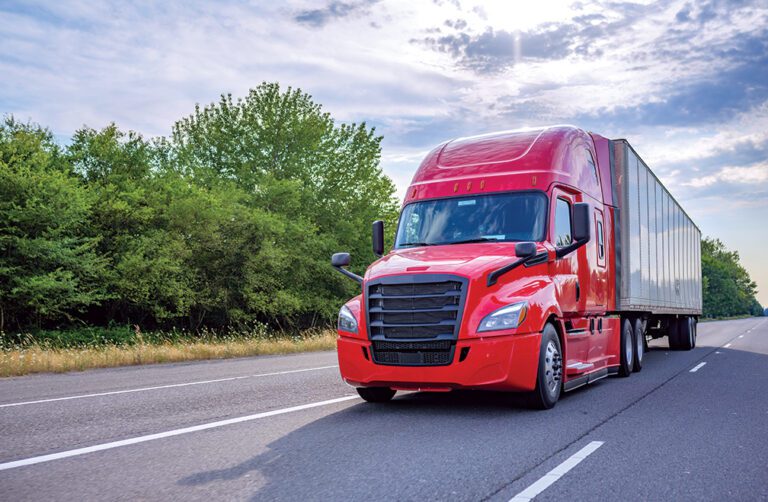It should be obvious that buying your own truck is equal to starting your own business. Sure, you’ll be able to make more decisions for yourself, such as what to haul, where to go and when to work.
You’ll also be responsible for managing the business and whether it is profitable. And, on top of that, you’ll be in charge of some personal things an employer might be doing on your behalf, such as withholding Social Security and Medicare tax, collecting and paying income tax, and providing benefits like health care and retirement.
Unfortunately, too many truck owners make the most common mistake in the business: They treat a settlement check like a paycheck. Settlements should be treated as business revenue, with all the costs of running the business subtracted before paying yourself. If all the revenue is considered personal cash, there won’t be any left to meet business obligations — or worse, the owner will always be dipping into the family finances to cover business expenses.
All of that creates another problem: How will you keep track of business expenses and calculate your cost of operation, both annually and on a per-mile basis?
Without knowing your operating costs, you won’t be able to make good decisions about purchases, or even what percentage of your income you’ll pay yourself. You’ll also likely make bad decisions about which loads to accept, unless you are leased to a carrier that pays the same amount for every mile.
Some drivers use commercial software like Quicken or QuickBooks to help them keep track of expenses. That’s a sound practice, but a spreadsheet (or even an old-fashioned paper ledger) will get the job done. The important thing is that every expense is tracked by category.
One problem with accounting software is that, because it does the calculations for you, you may not learn how those calculations are done. If you have a basic understanding of business accounting, you may find success with them.
Spreadsheet templates, on the other hand, can be found with a simple internet search, and many of them are free to download. They can be simple Google spreadsheets that don’t require downloading any programs, such as Microsoft Excel, and the formulas built into them can often be transferred to other spreadsheet programs.
Another way to obtain a spreadsheet is from your accountant, who may be able to provide you with a copy of one that closely matches what he or she will use to file your taxes. Most of these spreadsheets are some form of a business general ledger (GL) and are used to record expenses in categories that match the tax questions you’ll need to answer at the end of the year.
The most important thing is to make sure both fixed and variable expenses are recorded.
Fixed costs include expenditures for insurance, permits, property leases and truck payments. You’ll have to pay these costs whether your truck is running or parked. Variable costs include those that depend on how many miles you drive. Fuel is probably the largest variable cost.
By dividing total costs by the number of miles driven, you’ll be able to calculate your cost per mile. It’s easier once you have a full year’s worth of data, but the figure will need to be adjusted periodically to correct for changing costs, such as fuel prices.
It can be difficult to estimate your costs for the first year. That’s where information from other drivers can help tremendously. Other drivers can tell you, for example, how much they normally spend on tires in a year, or the amount of expense allocated for preventative maintenance.
One “must-do” item is to estimate your miles for the upcoming year. For example, if you plan to run 120,000 miles per year, you’ll need to cover 10,000 miles per month. You’ll need to make up periods when you’re not running at all due to vacation, illness, truck breakdowns or other causes.
It’s wise to run harder than necessary to make sure you reach your goal. For example, a goal of 120,000 miles per year means you’ll need to run about 2,308 miles each week. If you take a week off for vacation, and another week for holidays like Thanksgiving and Christmas, you won’t be accumulating miles during those weeks. If you run 2,400 miles per week, you’ll make up the difference and still achieve 120,000 for the year. 2,500 miles per week gets you to 120,000 even allowing for four “down” weeks.
Maintenance costs — including preventative services like oil changes and tires, repairs of parts and components that are wearing — is an important part of the budget. Large carriers running late-model equipment often spend 15 cents per mile or more for maintenance. Smaller carriers don’t get the same discounts and often run older equipment that breaks down more often. Because of this, they must plan more (much more) for their maintenance costs.
Of course, don’t forget to pay yourself. After all, you didn’t start your trucking business to not get paid.
It’s easy to think your pay is what’s left over after expenses, but that’s a recipe for disaster. Your expenses may be low one month, leaving you a large payout. The next month a rear-end or transmission could go out, resulting in extra expenses and leaving you nothing.
Put yourself on a modest salary that you feel you can comfortably afford (don’t forget the 15% self-employment tax you’ll be paying). Keep some cash in reserve for breakdowns and other unexpected expenses. You can always pay yourself a quarterly or end-of-year bonus if everything goes well.
Finally, knowing your expenses per mile gives you a baseline for what rates you can accept. These days, it isn’t uncommon for a small trucking business to have a per-mile cost of $2 or more. Obviously, accepting a load for $1.98 per mile won’t pay the bills, especially if there are a lot of deadhead miles involved. Fuel costs can change rapidly, too. Be prepared to adjust your cost per mile and make sure your revenue is high enough to cover it, and then some.
Knowing your expenses, especially the operating cost per mile, is a vital step in running your trucking business profitably.
Cliff Abbott is an experienced commercial vehicle driver and owner-operator who still holds a CDL in his home state of Alabama. In nearly 40 years in trucking, he’s been an instructor and trainer and has managed safety and recruiting operations for several carriers. Having never lost his love of the road, Cliff has written a book and hundreds of songs and has been writing for The Trucker for more than a decade.







